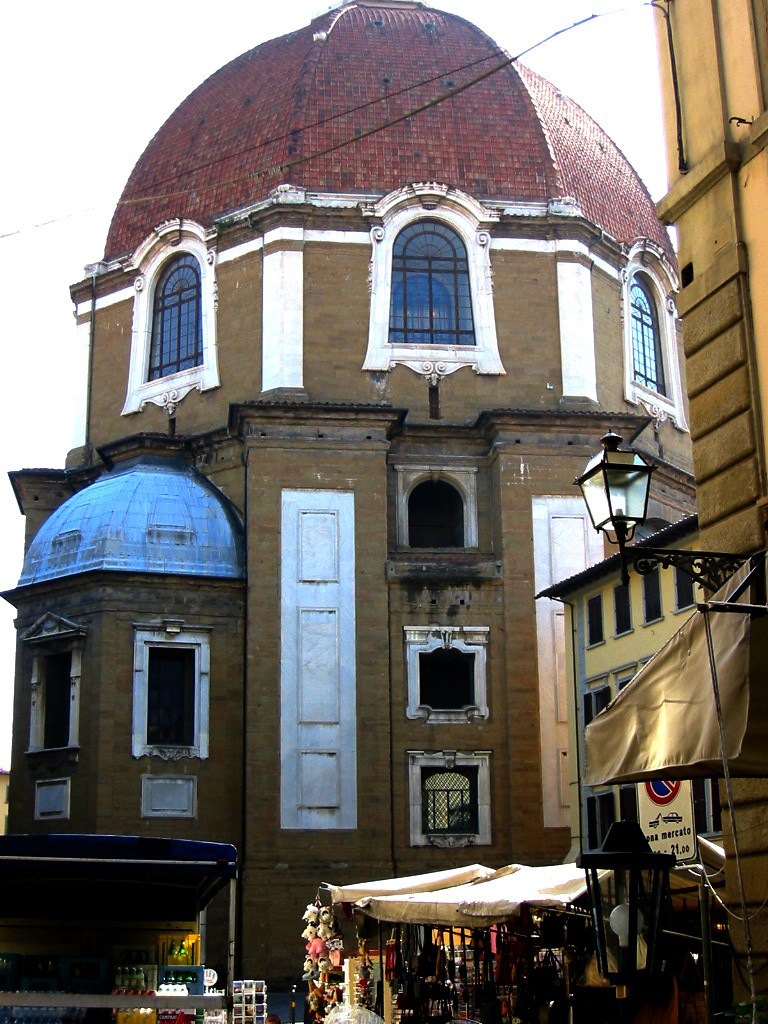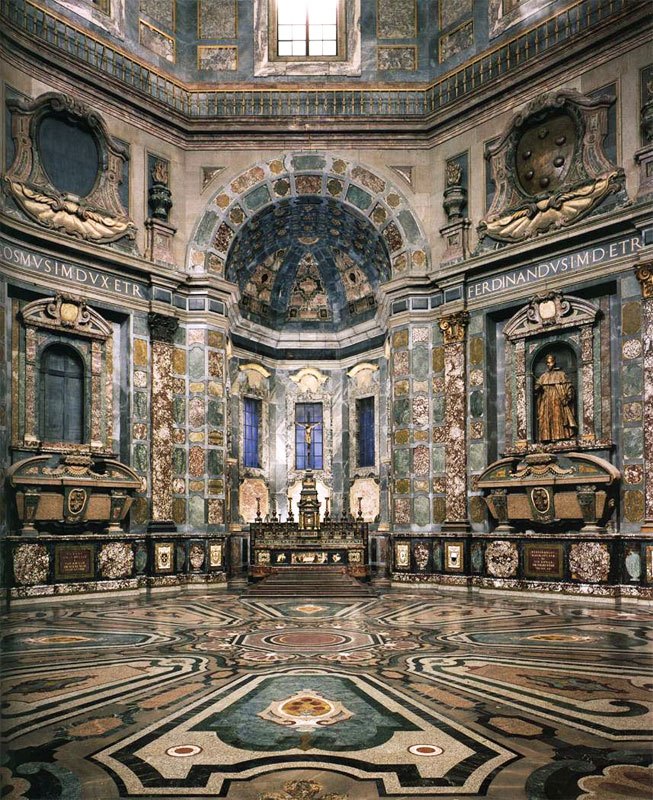
Cappelle Medicee
The Cappelle Medicee is the mausoleum for the Medicee family,
and it is done up in a style befitting the absolute rulers of Florence at its
height. Unremarkable from the outside, save for the red dome that resembles a
smaller version of Brunelleschi's dome on the Cathedral of Santa Maria del Fiori
(shown in the photo to the left), the interior belies the power and
opulence of its inhabitants. Street access leads to a crypt where
the lesser nobility were enshrined. some are marked by plain marble
tablets while others command a more impressive tomb, such as the Tomb
of Cosimo the Eldest, created by Verrochio (shown in the photo at the
bottom left). It also includes an impressive array of religious relics,
housed in glass cases (photo at upper right). One flight up is
the magnificent Cappella dei Principi (Chapel of Princes, shown in the
photo at the bottom right) a dazzling array of marble under the huge
dome; the tombs of six Medici Grand Dukes are in the chapel beneath the
dome, in sculptured recesses that stretch nearly from floor to
ceiling. The mausoleum, with its large dome and lavish interior
ornamented with
 marble, was conceived to celebrate the power of the Medici dynasty which had successfully ruled
Florence for several centuries. The octagonal room designed to contain
the bodies of the Grand Dukes is in fact almost entirely covered with
semi-precious stones and different-coloured marbles. The sarcophagi of
the Grand Dukes are contained in niches and complemented by bronze
statues. The inlay of the semi-precious stones, partially executed by
highly skilled workers from the laboratories of the Opificio delle Pietre dure
took several centuries to complete due to the difficulty of obtaining
such rare materials that were available only at very high cost. The
interior of the dome was planned originally to be entirely covered with
lapis lazuli, but was left incomplete at the end of the Medici period;
the frescoes we see today were painted by Pietro Benvenuti in 1828 and
feature scenes of the Old and New Testaments; these frescoes were
commissioned by the then-reigning Lorraine family.
marble, was conceived to celebrate the power of the Medici dynasty which had successfully ruled
Florence for several centuries. The octagonal room designed to contain
the bodies of the Grand Dukes is in fact almost entirely covered with
semi-precious stones and different-coloured marbles. The sarcophagi of
the Grand Dukes are contained in niches and complemented by bronze
statues. The inlay of the semi-precious stones, partially executed by
highly skilled workers from the laboratories of the Opificio delle Pietre dure
took several centuries to complete due to the difficulty of obtaining
such rare materials that were available only at very high cost. The
interior of the dome was planned originally to be entirely covered with
lapis lazuli, but was left incomplete at the end of the Medici period;
the frescoes we see today were painted by Pietro Benvenuti in 1828 and
feature scenes of the Old and New Testaments; these frescoes were
commissioned by the then-reigning Lorraine family.